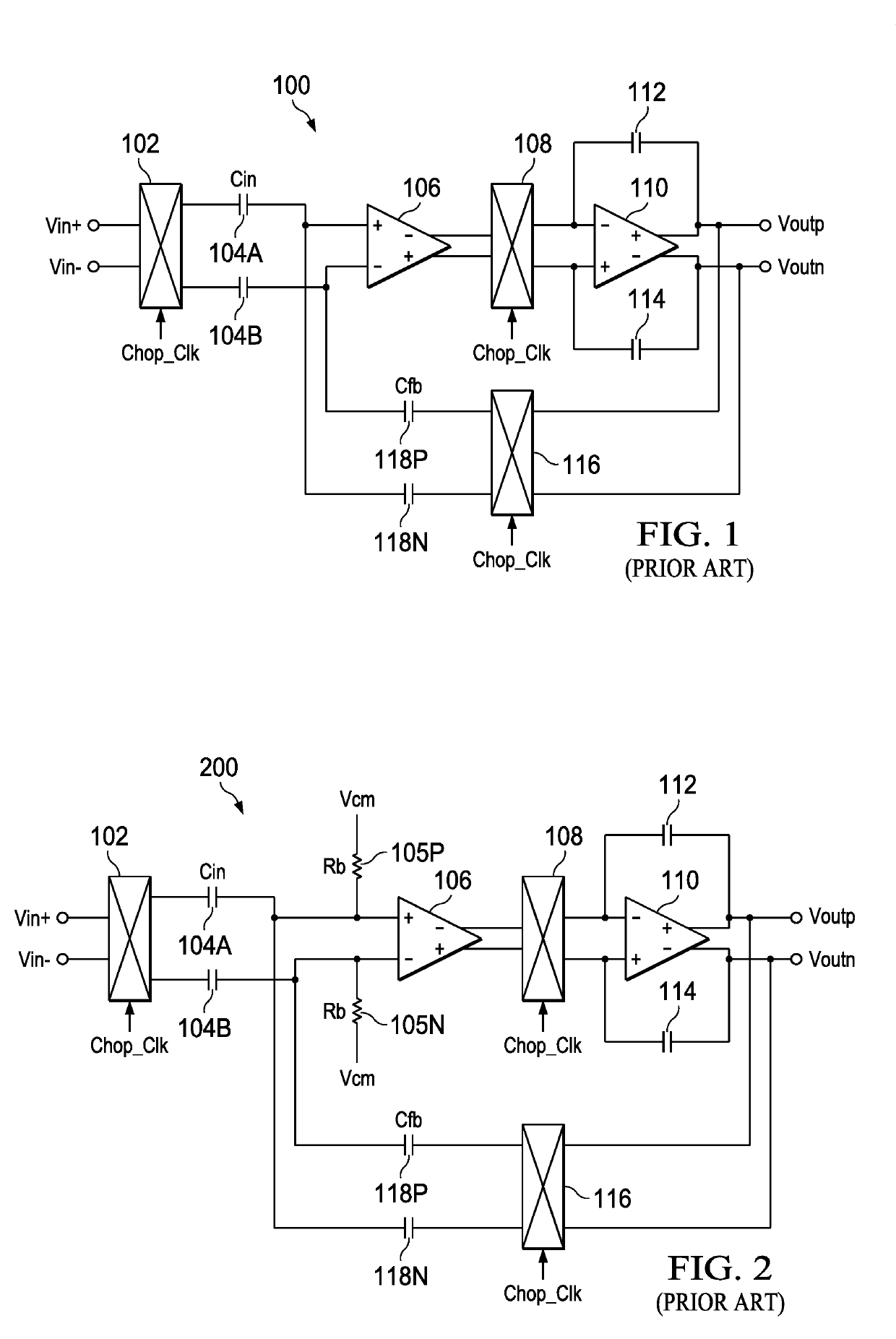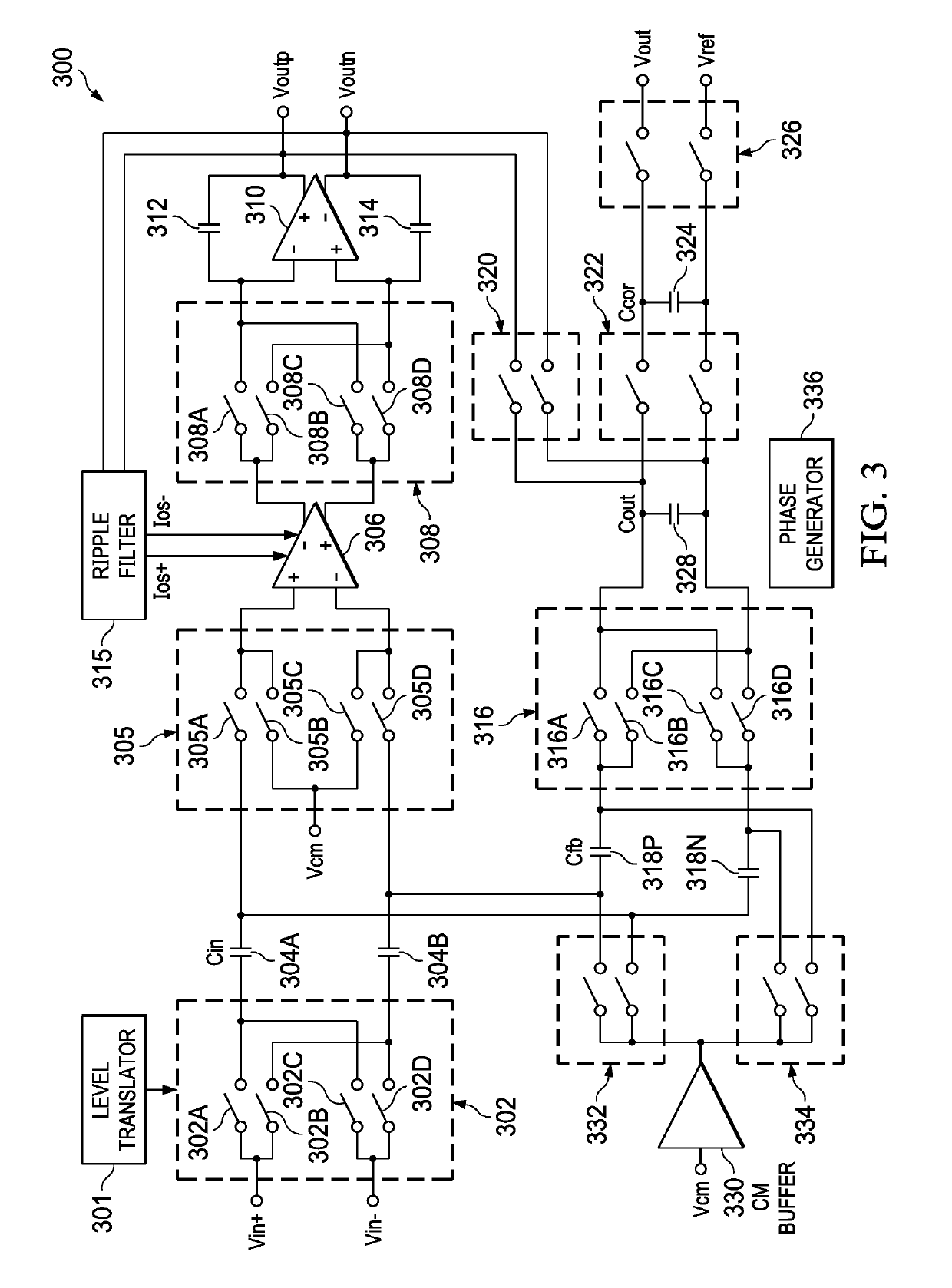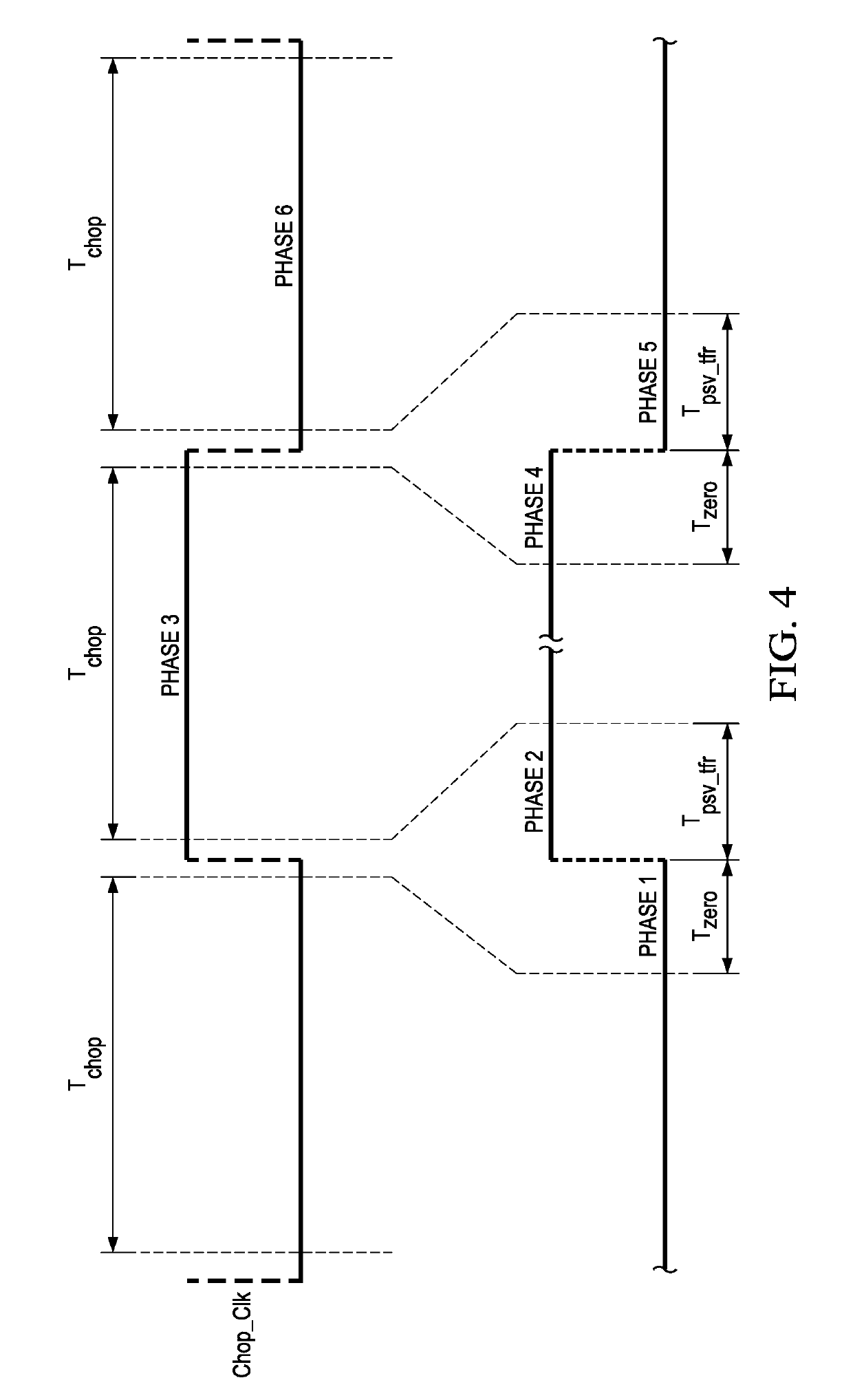Capacitively coupled chopper amplifier
a chopper amplifier and capacitor technology, applied in differential amplifiers, amplifiers with semiconductor devices/discharge tubes, amplifiers, etc., can solve problems such as increasing gain errors, adding noise, and potential output errors with settling
- Summary
- Abstract
- Description
- Claims
- Application Information
AI Technical Summary
Benefits of technology
Problems solved by technology
Method used
Image
Examples
Embodiment Construction
[0020]Referring now to FIG. 1, a simple capacitively coupled chopper amplifier 100 according to the prior art is illustrated. Vin+ and Vin− signals are provided to a first chopping switch 102. The outputs of the first chopping switch 102 are provided to series capacitors 104A and 104B. The series capacitor 104A is connected to the plus or noninverting input of a first differential amplifier 106. The series capacitor 104B is connected to the minus or inverting input of the first amplifier 106. The differential inverting and non-inverting outputs of the first amplifier 106 are provided to first and second inputs of a second chopping switch 108. The first and outputs of the second chopping switch 108 are provided to the inverting and noninverting inputs of a second differential amplifier no, respectively. A feedback capacitor 112 is connected between the positive output of the second amplifier no and the inverting input of the second amplifier no. A feedback capacitor 114 is connected ...
PUM
 Login to View More
Login to View More Abstract
Description
Claims
Application Information
 Login to View More
Login to View More - R&D Engineer
- R&D Manager
- IP Professional
- Industry Leading Data Capabilities
- Powerful AI technology
- Patent DNA Extraction
Browse by: Latest US Patents, China's latest patents, Technical Efficacy Thesaurus, Application Domain, Technology Topic, Popular Technical Reports.
© 2024 PatSnap. All rights reserved.Legal|Privacy policy|Modern Slavery Act Transparency Statement|Sitemap|About US| Contact US: help@patsnap.com










